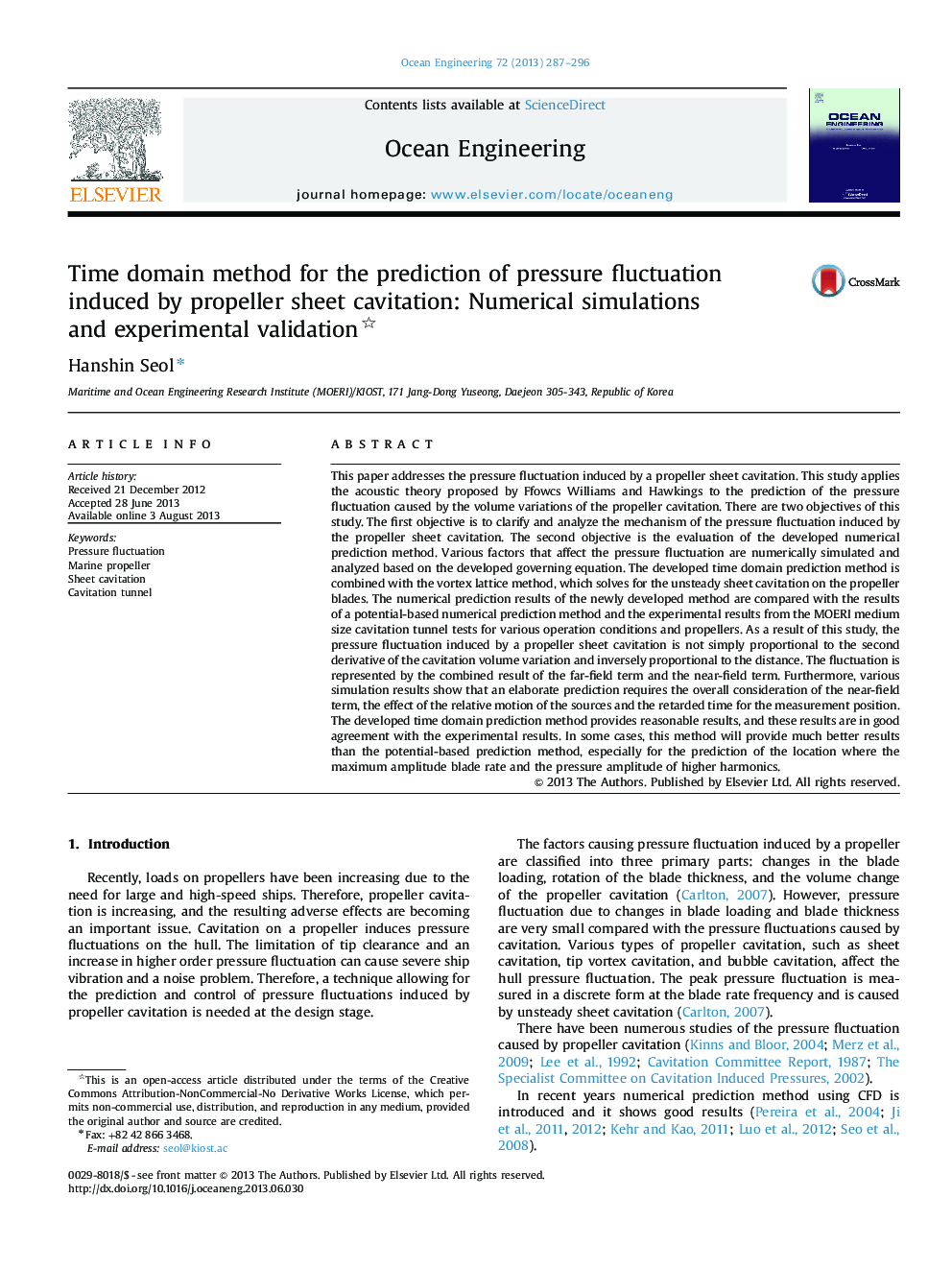| کد مقاله | کد نشریه | سال انتشار | مقاله انگلیسی | نسخه تمام متن |
|---|---|---|---|---|
| 8066526 | 1520718 | 2013 | 10 صفحه PDF | دانلود رایگان |
عنوان انگلیسی مقاله ISI
Time domain method for the prediction of pressure fluctuation induced by propeller sheet cavitation: Numerical simulations and experimental validation
ترجمه فارسی عنوان
روش دامنه زمانی برای پیش بینی نوسانات فشار ناشی از کاویتاسیون ورق پروانه: شبیه سازی عددی و اعتبار سنجی آزمایشی
دانلود مقاله + سفارش ترجمه
دانلود مقاله ISI انگلیسی
رایگان برای ایرانیان
کلمات کلیدی
نوسان فشار، پروانه دریایی، کاویتاسیون ورق، تونل کاویتاسیون،
موضوعات مرتبط
مهندسی و علوم پایه
سایر رشته های مهندسی
مهندسی دریا (اقیانوس)
چکیده انگلیسی
This paper addresses the pressure fluctuation induced by a propeller sheet cavitation. This study applies the acoustic theory proposed by Ffowcs Williams and Hawkings to the prediction of the pressure fluctuation caused by the volume variations of the propeller cavitation. There are two objectives of this study. The first objective is to clarify and analyze the mechanism of the pressure fluctuation induced by the propeller sheet cavitation. The second objective is the evaluation of the developed numerical prediction method. Various factors that affect the pressure fluctuation are numerically simulated and analyzed based on the developed governing equation. The developed time domain prediction method is combined with the vortex lattice method, which solves for the unsteady sheet cavitation on the propeller blades. The numerical prediction results of the newly developed method are compared with the results of a potential-based numerical prediction method and the experimental results from the MOERI medium size cavitation tunnel tests for various operation conditions and propellers. As a result of this study, the pressure fluctuation induced by a propeller sheet cavitation is not simply proportional to the second derivative of the cavitation volume variation and inversely proportional to the distance. The fluctuation is represented by the combined result of the far-field term and the near-field term. Furthermore, various simulation results show that an elaborate prediction requires the overall consideration of the near-field term, the effect of the relative motion of the sources and the retarded time for the measurement position. The developed time domain prediction method provides reasonable results, and these results are in good agreement with the experimental results. In some cases, this method will provide much better results than the potential-based prediction method, especially for the prediction of the location where the maximum amplitude blade rate and the pressure amplitude of higher harmonics.
ناشر
Database: Elsevier - ScienceDirect (ساینس دایرکت)
Journal: Ocean Engineering - Volume 72, 1 November 2013, Pages 287-296
Journal: Ocean Engineering - Volume 72, 1 November 2013, Pages 287-296
نویسندگان
Hanshin Seol,
